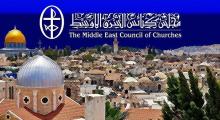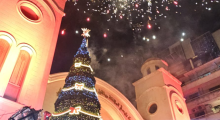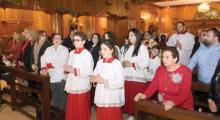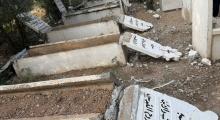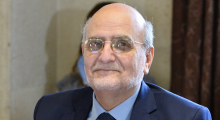Issued by the Catholic Center for Studies and Media - Jordan. Editor-in-chief Fr. Rif'at Bader - موقع أبونا abouna.org
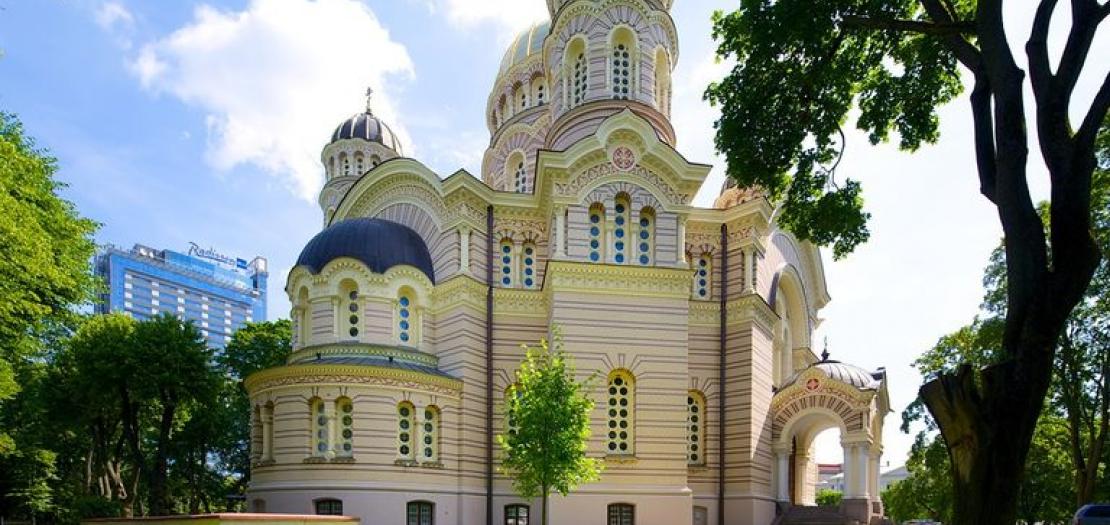
Symbolic gesture of goodwill towards Egypt's Coptic Christians should not obscure the contentious issue of Christian places of worship that persists in many parts of the country Nadia Blétry (Cairo) and Céline Hoyeau
Egypt January 8, 2018
On January 6, the eve of the Coptic Christmas, the head of the Coptic Church, Pope Tawadros II, and the Egyptian President, Abdel Fattah Sisi, inaugurated a newly built Coptic cathedral.
Amid cries of joy and of “We love you” from the worshippers, Sisi approached the altar side by side with Pope Tawadros II, to celebrate Christmas Mass held in accordance with the Eastern Orthodox tradition.
This celebration was particularly significant in that it was also the inaugural service at the Cathedral of Christ’s Nativity — a gift to the Coptic Church from the Egyptian government, constructed in the New Administrative Capital, 45 kilometers east of Cairo.
Security forces were in place around the enormous edifice, but were also deployed throughout the country to prevent attacks on churches.
“We love you, too. We are one family. You are part of this country and no one will drive a wedge between us,” Sisi said in response to the Coptic Christians cries at Mass.
Nonetheless, the issue of Coptic Christian churches remains a complicated one.
The Egyptian president has made an increasing number of goodwill gestures with regards to Coptic Christians who have recently felt marginalized. In certain regions, some churches are still closed due to the pressure exerted by Muslim extremists despite a 2016 law facilitating the construction, restoration and de-regularization of Coptic churches.
“In the upper echelons of the government, there is an evident willingness to integrate Coptic Christians into Egyptian society. But it will take time for attitudes to change,” said Anis Salama, a young Orthodox Copt.
Last month, a Coptic church in Giza, south of Cairo, was attacked by protesters objecting to the church’s lack of a permit. Since its construction 15 years ago, this church has never had a permit. There are numerous Coptic places of worship without permits in Egypt. These are tolerated by authorities — until they are denounced by protesters.
The Coptic Christian diocese in Giza has attempted, by virtue of the new law, to legalize its status but without success.
There is a lot of red tape involved, most probably due to fears of protests and attacks by Muslim extremists. In some regions, particularly in Upper Egypt, security forces are hard put to deal with the pressures and demands of families whose word is law in their villages.
Last October, four churches without permits were closed by police in the Minya region. Local Christian leaders protested in a communiqué that Coptic Christians are being victimized: “Those who threaten to commit criminal acts aren’t punished but Christians are, as the first option is to close their churches.”
Meanwhile, Coptic Bishop Anba Makarios of Minya has appealed to authorities. “If the churches are not allowed to re-open, it is not because they are unregistered; it’s because the law is failing and extremists are imposing their views.”
The law enacted in 2016 ought to have simplified administrative procedures but according to Ishak Ibrahim, researcher for the UN Egyptian Initiative for Personal Rights, the law “has had no effect” so far.
“Since the law was adopted, there has been no official communiqué about the construction of new churches. Quite the contrary: there have been around twenty attacks or protests, and repeated church closures.”
Bishop Makarios goes even farther.
“The law has not resolved the problem: it has exacerbated it. At times, it legitimizes the closing of churches because it lacks precision and includes too many restrictions. One example of these is that churches must be built in towns and not in villages,” he said.
Orthodox Coptic Christians have only 6,000 churches in Egypt, even though they make up some 10 percent of 95 million Egyptians.


